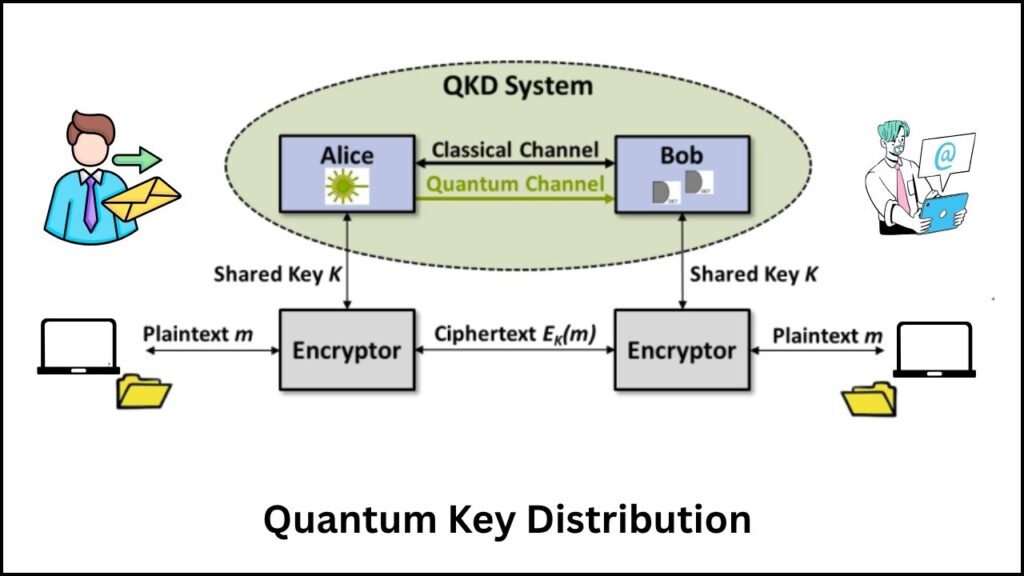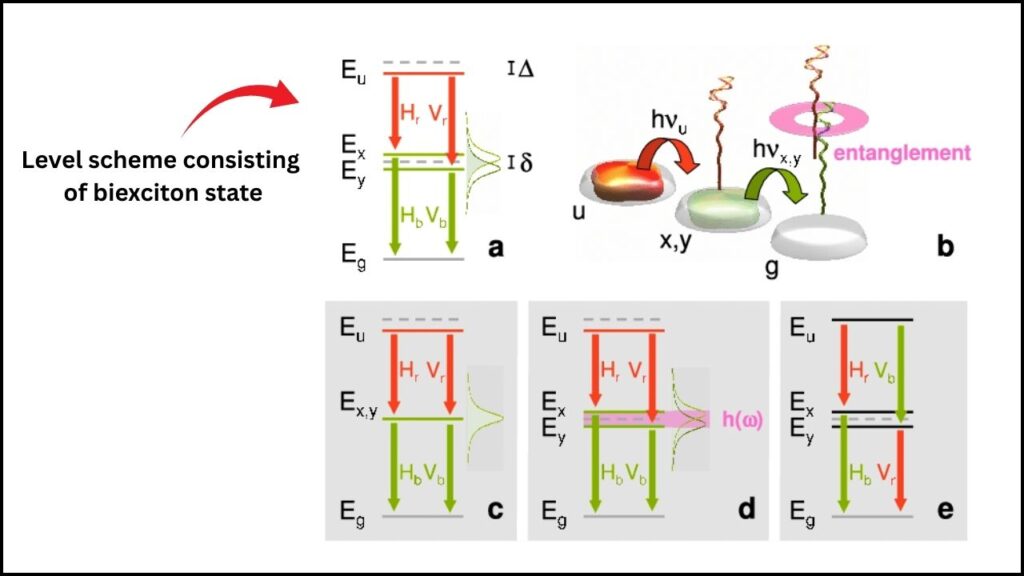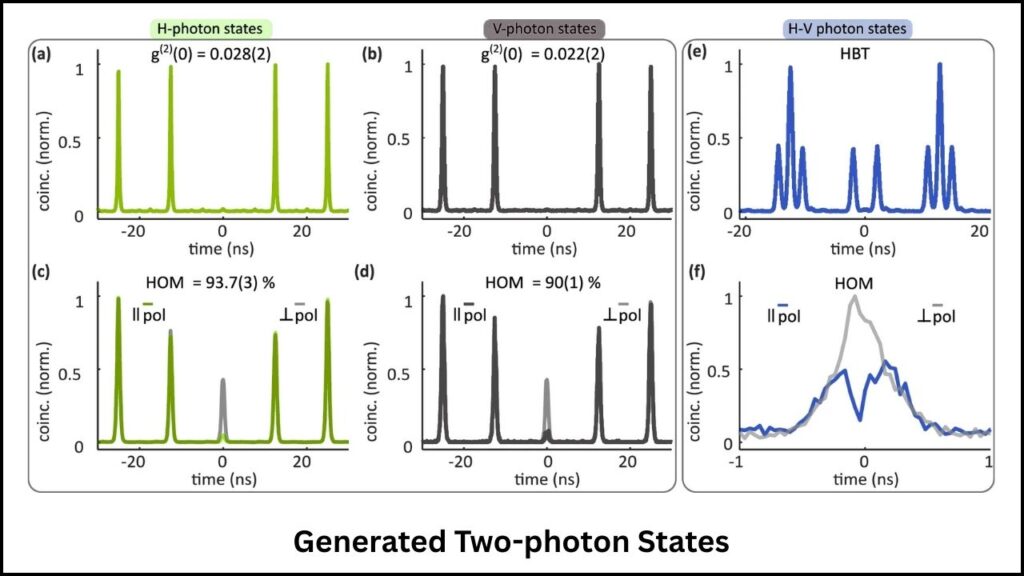Quantum dot technology has just taken an extraordinary leap forward with a new method that enables the passive generation of two-photon states from a single quantum dot. Put simply, scientists have discovered a way to create special light particles—photons—two at a time, without the need for complex, expensive, and energy-hungry active switching devices like electro-optic modulators. This major scientific advance, led by a research team at the University of Innsbruck headed by Professor Gregor Weihs, could redefine how quantum light sources are developed and used in the real world.

The breakthrough relies on a technique called stimulated two-photon excitation, which allows researchers to harness the natural properties of quantum dots to control the emission of photons entirely optically, with no active electronics in the switching process. That means cheaper, faster, and more efficient production of photons—exactly what’s needed for scalable quantum computing, secure communication, and advanced scientific experiments.
Table of Contents
Breakthrough in Quantum Dot Technology Enables Passive Two-Photon State Generation
| Feature | Details | Additional Info |
|---|---|---|
| Method | Stimulated two-photon excitation | Uses laser pulses to excite a quantum dot into a biexciton state, then triggers photon emission |
| Device | Single semiconductor quantum dot | Nanoscale photon source, compatible with chip-scale integration |
| Switching Mechanism | Passive demultiplexing without active electro-optic modulators | Lower cost, less complexity, and reduced photon loss |
| Switching Rate Limitation | Limited only by quantum dot lifetime | Enables faster photon generation |
| Applications | Quantum communication, quantum key distribution, multi-photon quantum experiments | Foundational for quantum computing networks |
| Impact | Can double multi-photon generation rate compared to traditional methods | Practical leap for scalable quantum technologies |
| Research Lead | Gregor Weihs, University of Innsbruck | Cited in peer-reviewed sources such as npj Quantum Information |
| Official Reference Site | University of Innsbruck – Quantum Photonics | Source for ongoing research updates |
The passive two-photon state generation breakthrough marks one of the most promising steps forward in quantum photonics. By removing active switching components and relying entirely on optical control, researchers have managed to improve efficiency, reduce costs, and potentially double the achievable photon generation rate. This could help unlock the full power of quantum communication and computing, bringing futuristic concepts like a global quantum internet closer to reality.
Understanding Quantum Dots and Two-Photon States
Quantum dots are incredibly small semiconductor particles—so small that they behave according to the rules of quantum mechanics rather than classical physics. You could think of them as “artificial atoms” that can emit individual photons one at a time when properly excited.
In advanced quantum applications, generating two photons in a specific quantum state is especially important. These paired photons can be used in quantum key distribution (QKD), where two parties share an encryption key in a way that’s impossible for eavesdroppers to intercept, or in photonic quantum computers, where multiple photons need to arrive precisely on cue.

Traditionally, generating such two-photon states involved using both a quantum dot and complex active optical switching systems to guide photons into the right channels. These devices, while effective, introduce inefficiencies, higher costs, and additional optical losses.
How The New Passive Two-Photon Process Works
The new approach completely changes this by using a purely optical method that’s elegantly simple yet scientifically sophisticated.
Step 1: Exciting the Quantum Dot
Short, precisely-timed laser pulses excite the quantum dot into its biexciton state—a condition where two electron-hole pairs exist at the same time. Think of it like winding up a spring not just once, but twice, storing twice the potential energy.

Step 2: Triggering Photon Emission
Using a second set of polarization-controlled stimulation pulses, the dot is prompted to release its stored energy as two photons in the desired polarization state. This process doesn’t use electronics—just carefully tailored light beams—meaning there’s no active element to slow things down.

Step 3: High-Speed, Low-Loss Output
Because no active switch is required, there’s far less photon loss. The only real limit to how quickly photons can be produced is the natural emission time of the quantum dot. In practice, this leads to much higher photon generation rates—up to double compared to active-switching approaches.
Step 4: Ready for Quantum Applications
The resulting paired photons are immediately usable in applications like quantum encryption, multi-photon interference experiments, and advanced quantum algorithms.
Why This Breakthrough Matters
For both researchers and industry players, the implications are enormous:
- Lower Cost: No more bulky, expensive electro-optic modulators means systems are cheaper to build and maintain.
- Higher Performance: Faster photon production rates allow more complex experiments and larger-scale quantum networks.
- Scalability: The passive design is easier to integrate into semiconductor chips, paving the way for mass production.
- Reliability: Fewer moving parts (or in this case, fewer electronic controls) translate into greater system stability.
If you think about where quantum technology is heading—towards global quantum internet and ultra-secure communications—having a reliable, cost-effective photon source is like finding the missing gear in a very complex machine.
Real-World Use Cases
Here’s where this technology could make an immediate and lasting impact:
- Quantum Key Distribution (QKD) – Secure communication between multiple parties without fear of interception, even from quantum computers.
- Multi-Photon Quantum Logic Gates – Vital for photonic quantum computing, where several photons must arrive exactly simultaneously for logical operations to work.
- Fundamental Quantum Physics Experiments – Tests of quantum entanglement, Bell inequalities, and other foundational principles require precise photon sources.
- Quantum Sensing and Metrology – Ultra-sensitive measurements of time, gravity, or magnetic fields often use correlated photons to achieve precision beyond classical limits.
The Science Behind the Biexciton State
For those wanting a deeper technical dive: a biexciton occurs when a quantum dot simultaneously hosts two excitons (each exciton being a bound pair of an electron and a hole). When the system relaxes from this state, it emits one photon to drop to a single exciton state and a second photon to return to its ground state. This natural cascade is perfect for generating two correlated photons, and the brilliance of this breakthrough lies in controlling that cascade entirely optically.
How Passive Demultiplexing Redefines Efficiency
In photonics, demultiplexing is the process of routing photons into different paths or channels. Passive demultiplexing uses the physics of light itself—such as polarization and wavelength—without electronic circuitry. This is inherently more efficient, avoids power consumption, and works at light speed. Until now, doing this for two-photon generation was seen as impractical. This research overturns that assumption.
Step-by-Step Guide to Understanding This Innovation
- Learn What Quantum Dots Are – Tiny semiconductor particles that can trap and release photons with high precision.
- Understand Why Paired Photons Are Special – They enable secure quantum communication and quantum algorithms that surpass classical limits.
- Explore the Biexciton State – This is the natural source of paired photons in quantum dots.
- Recognize the Problem with Active Switching – It adds cost, complexity, and optical losses.
- Appreciate the Passive Solution – Using only laser pulses to control photon release without electronics improves speed and efficiency drastically.
Quantum Dots Unlock Cleaner, Faster Energy Reactions in Groundbreaking Study
Quantum Dots Power Next-Gen Displays: What to Expect from Future Screens
Canada Advances Quantum Error Correction Techniques for Scalable Quantum Computing
FAQs About Breakthrough in Quantum Dot Technology Enables Passive Two-Photon State Generation
What exactly is a quantum dot?
It’s a nanometer-scale semiconductor crystal that can emit photons with precise properties when excited by light or electricity.
How is this different from traditional photon sources?
Traditional sources use active components to route photons, but this new method bypasses them completely, making the process faster and more efficient.
Will this technology be available commercially soon?
Although it’s still in the research phase, the simplicity of the method means it could transition to commercial devices relatively quickly.
Why are two-photon states important?
They are essential for quantum encryption, certain computing algorithms, and fundamental physics experiments that need correlated photons.
Where can I read the technical paper?
The research is available on arXiv and in npj Quantum Information, with more details on the University of Innsbruck’s official site.



















